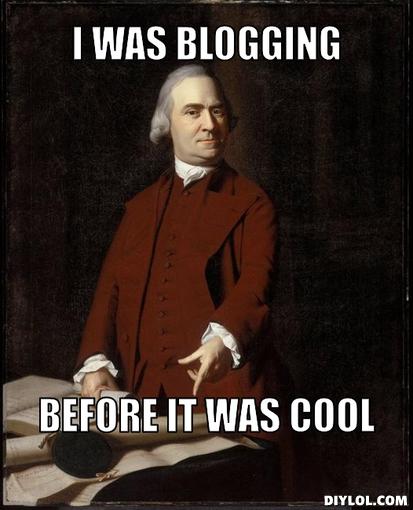Hi all. I just decided to reprint a portion of one of my favorite entries to try and straighten out my pages and dates. Here it is:
It is always hard for me to realize that it does not have to be absolutely perfect. I can get sidetracked on making one small portion exactly how I want it and by doing so I take forever. If I could do that at the right times it would be great. So, anyway, I am going to leave the BD page “as is” and link to some of the articles there until I can re-archive them here. Eventually I will have everything here, but nobody is getting to hear my great wit and wisdom if I spend all my time “tweaking” and not writing. I enjoy the “tweaking” part, though. I like playing with the HTML and javascripts and now I am seeing what .asp and .php can do and I am fascinated by how it all works. On the Word Press support page, http://wordpress.org/ is a quote that says “Code is Poetry.” Sometimes I think it’s true. A lot of programming seems to be merely a combination of understanding the parameters and then putting in variations of “if,” “then” and “else.” A computer seems like a “person” that has never done anything. What I mean is, say you have never had to go across the street to make a phone call (bad example since phone booths are almost obsolete or good example because phone booths are almost obsolete?). A computer program for a new robot might go something like this:
Take this coin, called a dime, in your hand.
Memorize this number, (123)555-5555.
Put the coin in your pocket, releasing it when it touches the bottom of the pocket.
Walk to the door.
Grasping the knob, turn it and pull the door towards you with a smooth, steady motion.
Walk out the door and pull the door shut as you leave.
Orient your position so you are facing down the hard, flat surface called “sidewalk.”
When you reach the end of the sidewalk, you will reach another, larger, “sidewalk.”
To continue down the “sidewalk,” turn right and walk until you reach a point where the “sidewalk” discontinues in a drop-off called “curb.”
Stop
Orient yourself by turning left.
(I will skip some details of our program, but you would have to describe the blacktop, the stop and go light, the lines of the crosswalk, etc, then)
If light is green,
Then cross street
(Or) Else stop and wait for light to change.
When light is green, cross street.
(Here we describe the phone booth and how to enter it and what the various parts of the telephonic communication device look like.)
Pick up receiver and hold transmitter to your mouth and receiver speaker to ear.
Retrieve dime coin from pocket.
Insert it in the slot marked “Insert Coins Here.”
Listen for dial tone.
If dial tone sounds normally;
Then; Begin process called dialing by determining input mechanism type, rotary dial or pushbutton keypad.
If rotary dial, then;
Using index finger of empty hand, gently insert into hole covering corresponding number and rotate dial clockwise until it stops or reaches stop, then remove the finger and release the dial and wait for it to stop its return. Follow same procedure until all numbers are dialed. (Anyone remember the George Carlin joke about calling the operator and giving your finger a free ride back from “zero?”)
Else if pushbutton keypad…etc.
Then you would go on to explain what to do if the line is busy, how long to let the phone ring before hanging up, what to do if someone answers, etc. Then you have to give instructions on how to get back to where he started, the whole thing might be like trying to explain to a man the correct procedure to follow to do a load of laundry. Well, okay, easier than that, but you get the idea. And what if your robot finds there is no phone booth or that the phone has been stolen or vandalized?
When writing web pages you have a program called a browser that is already instructed in what the door is, the streets, the lights, etc, you just have to tell it what you want it to do. (I know there is a Programmer or Writer of Code out there going, “There’s a problem with your “If, Then, Else” routine and really, there are a lot better examples to use.” I know, but it’s just my imperfect way of explaining.)
I like my new digs. I am still learning some stuff…It’s all a work-in-progress so far and I appreciate your patience.
In honor of Reb Tevya from Fiddler on the Roof, I end all my entries with a quote from The Good Book or, er, sometimes just a good book and I think I’ll keep that up.
Remember, The Good Book says, “…have patience with me…”










